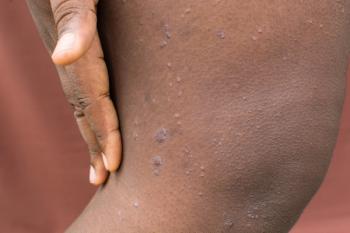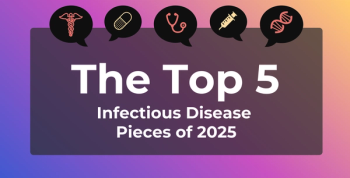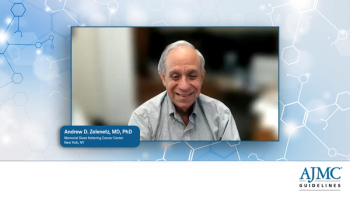
Resources to Facilitate the Management of Migraine
Peter L. Salgo, MD: We come back to the drugs themselves, and then we also have prior authorization. It’s cumbersome, right?
Jill Dehlin, RN: Yes.
Peter L. Salgo, MD: Is there anybody who really sees a very clear, simple path through this, or is it always going to be this complicated? What do you think?
Malaika Stoll, MD, MPA: Fortunately, it works for many. That’s what we’re hearing. There are many people who are able to get treatment pretty easily. The folks who we worry about are the ones who aren’t treated easily. They’re the ones who have to go through these hoops. They’re the ones who have to deal with it. Having that physician advocate or that primary care doctor by your side and your organization, as well, is how you get through this—that partnership with your physician.
Peter Goadsby, MD, PhD: You can see a technological evolution. If the prior authorization requires a certain number of days of headache, for example, or previous therapies, you can see mobile apps, such as a diary app, taking on much of the role—having a faciliatory role.
Malaika Stoll, MD, MPA: That’s a good point.
Peter Goadsby, MD, PhD: Linking up with what the insurer wants. It’s good medicine, in headache, to have a careful diary. It’s good for the patients, and it’s good for the doctors. And actually, it could be very helpful in terms of communicating with insurance companies. I do think that our interests are aligned here. Patients want to be better, physicians want to make them better, and frankly, I think payers want them to be better. A patient who’s better ultimately is working and contributing. The patient is not going to the emergency department. So I don’t see that as a problem. The administrative side is challenging, but I don’t think these are insoluble problems. I don’t think anyone hates anybody. I don’t think anyone hates patients or hates insurance companies. There are probably technical ways of making this a bit easier.
Malaika Stoll, MD, MPA: I agree. For example, with prior authorizations, we’re working to get access to electronic health records. This would mean that the patient wouldn’t really have to do much. The physician interviews the patient and sends it off. The plan sees it and approves it. I think we are getting to a better world.
Peter L. Salgo, MD: I’ll just make an observation. I do a fair number of these panels. This is the most collegial group I’ve ever seen. We’ve had panels where people have been opening up, open fire on each other about this.
Peter Goadsby, MD, PhD: We want to do good.
Peter L. Salgo, MD: Yes, everybody seems to want to do good.
Peter Goadsby, MD, PhD: There’s a big opportunity to do good. Certainly, in the headache world, we’re quite a collegial bunch. We’d like to do good.
Peter L. Salgo, MD: If I may, what struck me when you were discussing the mobile apps is that it’s a patient’s own personal, private executive electronic health record.
Peter Goadsby, MD, PhD: That’s right.
Peter L. Salgo, MD: Wouldn’t it be great if you could link that, in some secure method, to your electronic health record? That would help, wouldn’t it?
Malaika Stoll, MD, MPA: Right, and that’s part of our future vision. We’re very focused on HIEs [health information exchanges] and in trying to get to that point.
Jill Dehlin, RN: By getting patients involved in their own care, it gives them some control. It helps them to communicate better with their physician. Patient—physician communication is really key.
Malaika Stoll, MD, MPA: That’s part of the underdiagnosis problem as well. That’s part of the issue—communication.
Peter L. Salgo, MD: It seems to me that the biggest risk for using these mobile apps is looking at your mobile app while crossing the street. I don’t know where you live, but where I live it’s a massive problem.
Jill Dehlin, RN: Or not opening it to begin with.
Peter L. Salgo, MD: Or not opening it. Everybody is on the phone, all the time. That’s a public health crisis that we’re not going to solve today.
Jill Dehlin, RN: No.
Peter L. Salgo, MD: Are there specific mobile apps that you know of, that you like?
Peter Goadsby, MD, PhD: I like Migraine Buddy.
Peter L. Salgo, MD: Migraine Buddy, really?
Malaika Stoll, MD, MPA: It’s like My Fitness Buddy.
Jill Dehlin, RN: MigrainePal.
Peter L. Salgo, MD: OK, MigrainePal.
Jill Dehlin, RN: Yes, you can just look for those kinds of diaries on Google Play through your mobile app store.
Peter L. Salgo, MD: You just put in the word migraine, and it will come up?
Jill Dehlin, RN: Yes.
Peter L. Salgo, MD: Is any one better than the other?
Peter Goadsby, MD, PhD: I have found Migraine Buddy to be quite useful. You can use 10 different mobile apps.
Malaika Stoll, MD, MPA: It’s important to find one that works.
Peter Goadsby, MD, PhD: Yes, find one that makes you comfortable. The patient should use it to get better care. See it as a tool to improve communication and care.
Peter L. Salgo, MD: Because an app that you don’t use is the same as an app that doesn’t exist.
Peter Goadsby, MD, PhD: Yes, totally.
Peter L. Salgo, MD: It’s like a drug that’s on the shelf. You’re not taking it for whatever reason. People taking medication has always been an issue. Compliance is a big problem, even for headache.
Peter Goadsby, MD, PhD: Yes.
Newsletter
Stay ahead of policy, cost, and value—subscribe to AJMC for expert insights at the intersection of clinical care and health economics.







































